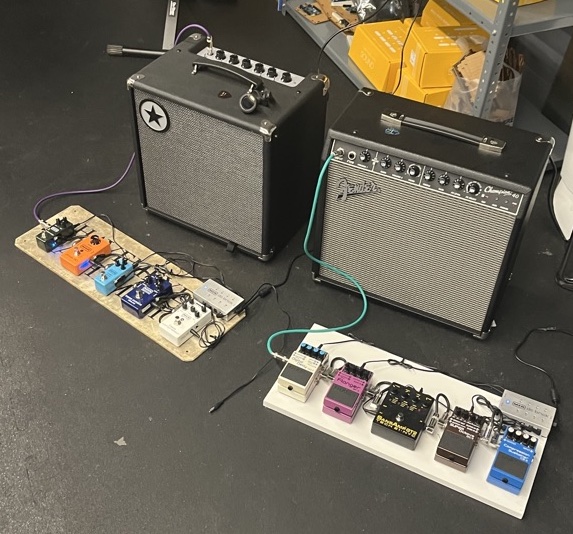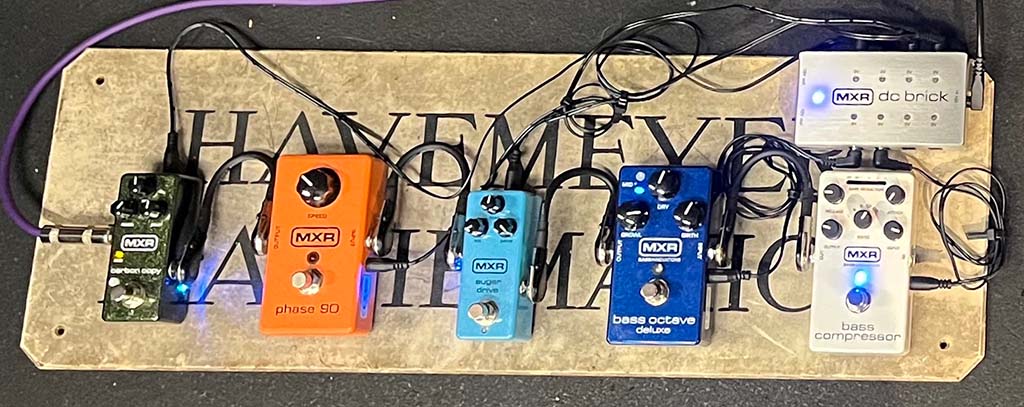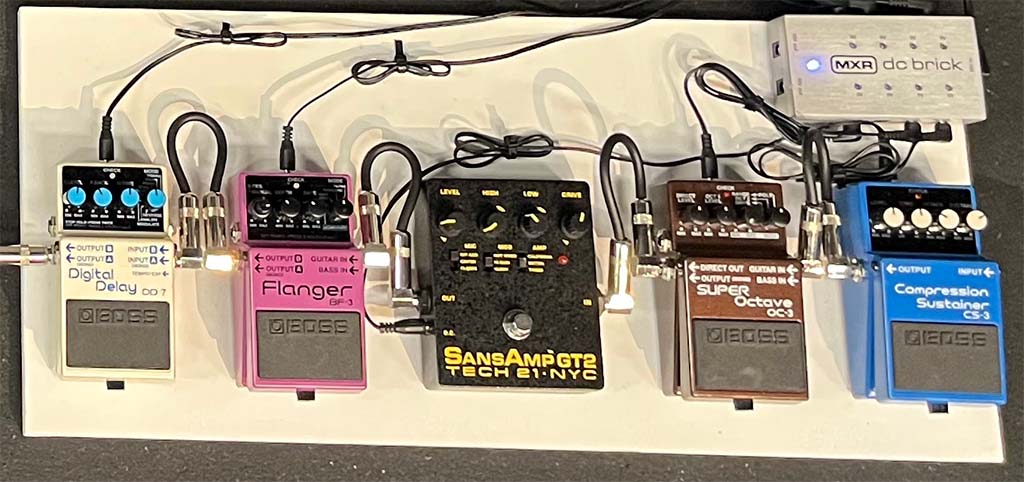audiolab
assets for the IDM audio lab (2MTC, room 824)
This project is maintained by IDMNYU
The Amps
The IDM Audio Lab has two instrument amplifiers: a Blackstar Unity 30-watt bass amplifier and a Fender Champion 40-watt guitar amplifier:

The power switches for both amplifiers are on the rear.
Both amps have pedalboards, curated to use for baseline instrument effects research with the IDM Pedals project. The pedalboards are both DC powered from MXR DC Brick power supplies.
The bass pedalboard consists of (from right to left):

- an MXR Bass Compressor. This is a modern compressor pedal designed for bass guitar, with input and output gain, a stepped ratio knob, and attack / decay controls. The threshold value for the compressor is fixed; you use the input and output knobs to balance against it.
- an MXR Bass Octave Deluxe. This is an analog (PLL-based) monophonic octave pedal that provides two sub-octave tones, one synthesized through a slew-limiter (“Girth”) and the other through a clipping circuit (“Growl”).
- an MXR Sugar Drive. This is a small-format clipping diode-based overdrive modeled on the famous Klon Centaur developed by Bill Finnegan.
- an MXR Phase 90. This is a classic, single dial phaser effect, and one of MXR’s first pedals, first produced in 1974.
- an MXR Carbon Copy Mini. This is a small format analog (bucket-brigade device) delay pedal. Like all solid-state analog delays, it has a characteristic degredation of the signal as the echo regenerates.
The guitar pedalboard consists of (from right to left):

- a BOSS CS-3 Compression Sustainer. This is an updated version of the original BOSS compressor pedal from 1979, designed to work with full range instruments. It has controls for the input gain, tone balance, attack, and sustain (the release time on the compressor’s envelope follower).
- a BOSS OC-3 Super Octave. This pedal contains both the original BOSS analog (PLL) octave circuit, which synthesizes tones one octave and two octaves below a monophonic input signal, and a newer digital polyphonic circuit that uses pitch shifting.
- a Tech 21 Sans-Amp GT-2. This is an amp modeler / distortion pedal by Brooklyn-based Tech 21, designed to model classic amplifier overdrive and distortion effects, as well as different cabinet miking techniques. Often used as a DI effect, it can also be used as a stage distortion pedal.
- a BOSS BF-3 Flanger. This is a modern version of the original BOSS flanger from 1977, which has indepedent controls for center delay time (“manual”), LFO rate and depth, and regeneration. This version has additional controls for use as a tremelo effect, and has individual bass and guitar inputs; the bass input runs the signal through a crossover to maintain the integrity of the low frequencies.
- a BOSS DD-7 Digital Delay. The BOSS DD-2 digital delay from 1982 was the first mass-market digital delay pedal, using a DSP to create the echo instead of analog circuitry. This version can produce up to 6.4 seconds and can do looping, reverse delay, and other variations on the echo effect.
Rules for using the amps:
- Do not rearrange the pedalboards; if you use your own effects, please restore the system so that the output of the final (leftmost) pedal is patched to the input of the amp.
- Remember to turn off the amplifiers when you are done using them.